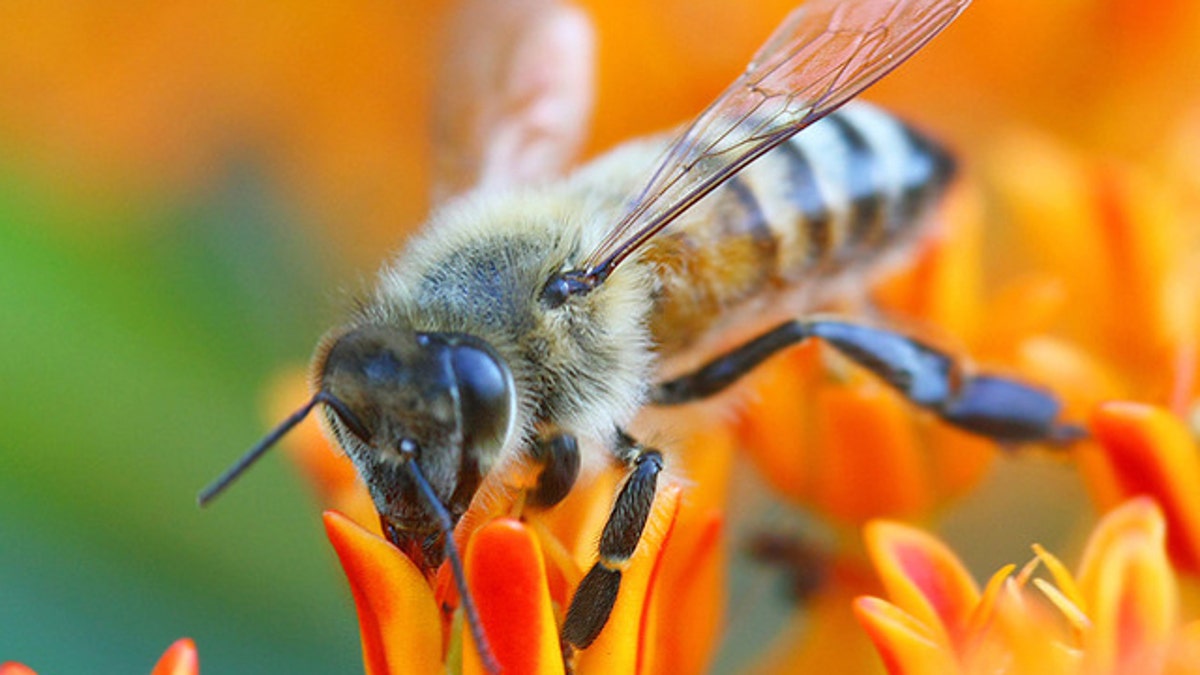
Despite their grass-seed-sized brains, bees have signifcant computational prowess. (Flickr / Paul Stein)
While they seem to wander leisurely from flower to flower foraging for pollen, bees are actually solving complex mathematical problems that take computers days to computer, studies found.
Researchers at Queen Mark, the University of London, and Royal Holloway have discovered that in their meandering, bees find the shortest possible route between the flowers they randomly discover. By doing so, the honey-lovin' insects are essentially solving the "Traveling Salesman Problem" -- despite having brains the size of a pinhead.
The classic mathematical problem, first formulated in 1930, involves a traveling salesman who must find the most efficient itinerary that allows him to visit all locations on his route. It is one of the most intensively studied problems in optimization.
Computers solve it by comparing the length of all possible routes and choosing the shortest.
"Foraging bees solve traveling salesman problems every day," researcher Nigel Raine from the School of Biological Sciences at Royal Holloway explained. "They visit flowers at multiple locations and, because bees use lots of energy to fly, they find a route which keeps flying to a minimum."
Professor Lars Chittka from Queen Mary's School of Biological and Chemical Sciences added that "such traveling salesmen problems keep supercomputers busy for days. Studying how bee brains solve such challenging tasks might allow us to identify the minimal neural circuitry required for complex problem solving."
The researchers hope their discovery will help shed light on real-world human issues.
"Our lifestyle relies on networks such as traffic on the roads, information flow on the Web and business supply chains," read a statement by the scientists. "By understanding how bees can solve their problems with such a tiny brain, we can improve our management of these everyday networks without needing lots of computer time."
